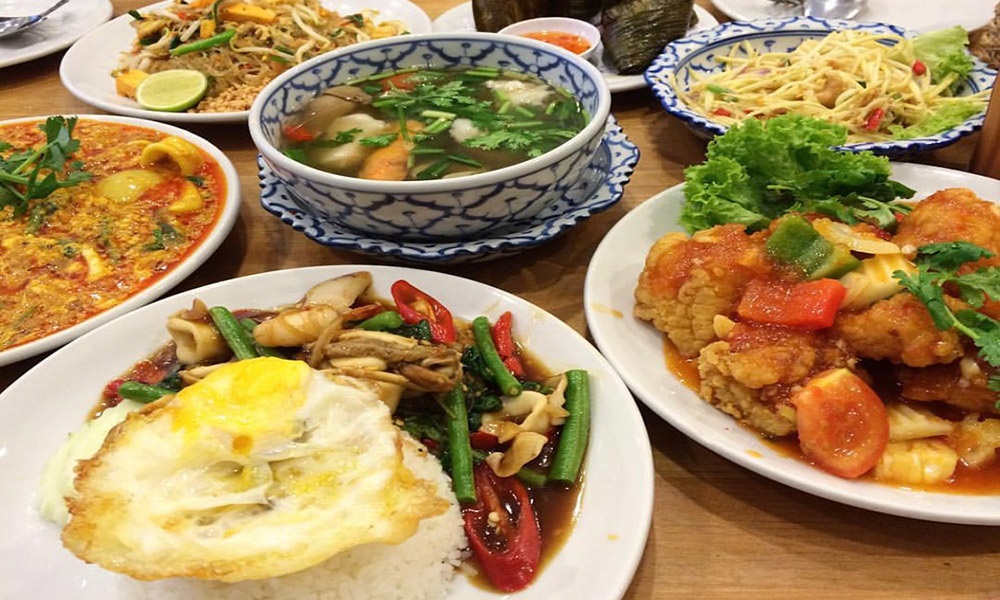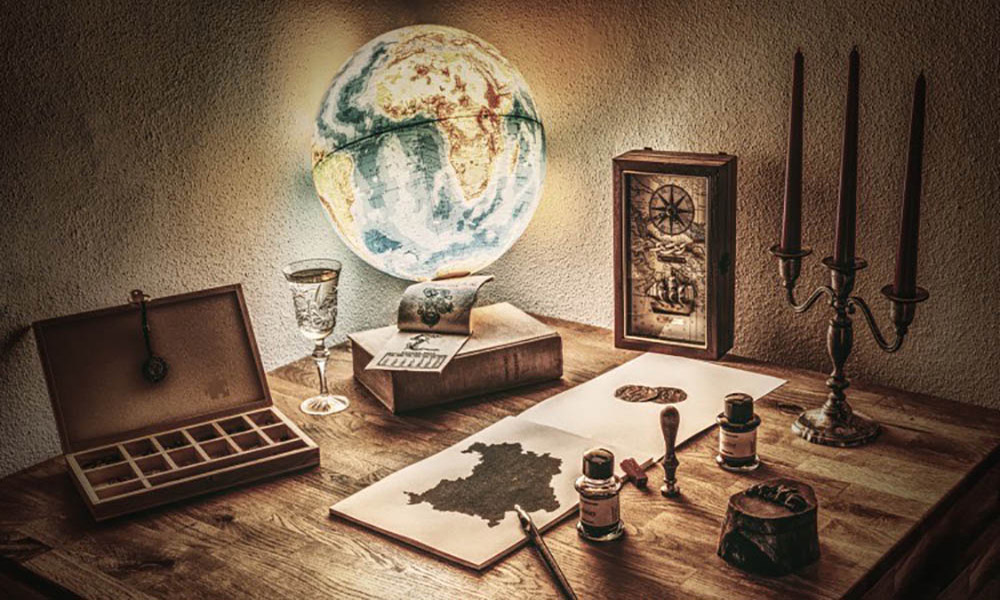By Li Yen & Won Xue Li
On the walls of artist Choo Keng Kwang’s studio hang a plethora of his oil paintings ranging from Chinatown scenes and doves to a beautiful Balinese dancer.
An unfinished painting of a scenic paddy field sits on the floor.
“His eyesight is not very good now. He can finish this painting in 1-2 weeks when he is young. But this painting is still not done after two years,” says Mr Choo’s nephew – Tom Choo.
Born in 1931, Choo Keng Kwang is a renowned first-generation artist in Singapore, along with Georgette Chen and Liu Kang. His oil paintings fetch six-figure sums today, and his collectors include prominent figures such as the first moon-landing astronaut Neil Armstrong, President Anwar Sadat of Egypt, and the late President Ong Teng Cheong.
Also a philanthropist who supports education for young people and the less fortunate, through the sale of his oil paintings, Mr Choo has helped raise funds for charitable organisations, the education of a young musician, the building of a school and even some community centres.
“I dare to say I am the Singaporean artist who donated the most paintings to charities,” says Mr Choo proudly.
Mr Choo is amiable and disarmingly frank. He is not afraid to talk about his achievements and offers incredible insights into his paintings. He and his nephew, Tom Choo, generously share with us oil painting tips.
As for his motto in life, he says with a chuckle, “No, I don’t have one. I just live life in a muddleheaded way.”
The Beginning
Mr Choo’s passion for Fine Art started when he was just a child. His interest was sparked from the comics and cartoons he liked to read and watch.
The 84-year-old remembers vividly how his friends and school teachers at Catholic High School laughed at him when he was pursuing his passion in art at the Nanyang Academy of Fine Arts.
“Teachers and students at the school would laugh at me, saying that I was wasting my life away carrying a bag and hanging around here and there learning how to paint. At that time, barbers would carry a little bag, and I was also carrying one. They had combs in their bags while I had paint tubes in mine,” he recalls.
He adds, “I wouldn’t really care though. I was learning painting simply because I really liked it. It was not for making lots of money nor was it for pleasing others.”
Despite criticism from school teachers regarding his pursuit of art, Mr Choo’s father – diamond trader Choo Kim Kye – provided him with tremendous support and encouragement. While his father was still alive, he would accompany his son to his painting spots – and would even hold an umbrella over his head.
Mr Choo did not follow the path of a full-time artist upon his graduation from Catholic High School and NAFA in 1953. He began as a teacher and principal at Sin Hua School and was the Head of Art Education at NAFA from 1984 until his retirement.
Despite his teaching commitments, he would spend his free time and afternoons after work doing what he loves – painting.
However, he delved into a cheaper art form – woodblock printing in his early years – as the materials for oil painting were expensive.
“In my early days, I painted workers, strikes, businessmen, and I carved the 513 incident,” he says.
One of his most controversial woodblock printings is the “13th May Incident”, which depicts the lesser-known 513 incident in 1954. In the 513 incident, students protested the British authorities over the issue of national education, which resulted in a violent clash with policemen that left over 20 people injured and 48 students arrested.
Mr Choo considers himself a lucky artist. He sold his first work to an American who was the CEO of a bank.
“He bought one of my paintings and assigned me to work on a project doing mural paintings for Merlin Hotel. That marked the turning point of my life. It was the very first mural commission that changed my life and I did make lots of money from it,” he reveals.
His Paintings
Artist Choo Keng Kwang is famous for painting scenes of old Chinatown and doves. Mr Choo’s oil paintings look romantic and beautiful at first glance, with a strong nostalgic vitality that will appeal to the masses.
“My paintings are easier to understand, unlike abstract paintings,” echoes Mr Choo.
Mr Choo generously hands us ‘The Selected Works of Choo Keng Kwang’, a book that features over 180 works from Mr Choo’s repertoire in a period of over 50 years.


From his beloved doves to his muse, Chinatown, his Nanyang-style works feature a wide array of subjects in various countries, made in woodcuts, oil and batik-style painting. There is history in all these paintings. The book also celebrates his artistic dedication and contributions to the community at large.
He shows us his paintings of old Chinatown, which capture nostalgic scenes of the wet market for wild animals, the roasted pork shop which people patronised when their daughters got married, and the funeral parlours along Sago Lane, also dubbed “Sei Yang Gai” (Street of the Dead), amongst others.
“Chinatown was one of my favourite themes. I was the first artist to portray Chinatown. To create a moving painting that depicts Chinatown, you need to know about the people there: What are their lives like? What kind of clothes do they usually wear? What types of stuff are they selling? Therefore, I always hung around Chinatown to study my subjects. I always carried my bag there and painted on the spot, thus I think most of the residents in Chinatown know me,” says Mr Choo with a smile.
After the old Chinatown was demolished, he switched to painting doves. “I rear doves at home,” says Mr Choo. “It is easier, since I can paint doves at home,” he adds.
“It is hard to paint white doves, as it is difficult to illustrate the different shades of white,” his nephew Tom asserts. “White is the most difficult colour to illustrate. At first, it looks like a dirty dove. White is very hard to paint,” Mr Choo reaffirms.
Tom explains that in Mr Choo’s dove paintings, the backgrounds are always misty and the doves are looking at one another, and they seem to be communicating. The doves are drawn in different postures and they are composed to look natural.
Don’t paint for the sake of fame.
Choo Keng Kwang,
World Class Artist
“My uncle’s style is a blend of West and East. He used the technique in Chinese painting to render these tree branches in the dove paintings, but blended in Western colours and shading,” Tom points out.
“In Chinese painting, you seldom see tropical flowers, but my Uncle included Southeast Asian flora in his dove paintings, which make [the most unique combination] of all,” he adds.
Mr Choo has also painted Little India, Angkor, Bali and Guilin Zhangjiajie.
“I have been to Bali 10 times!” exclaims Mr Choo.
Art Uplifts One’s Character
Mr Choo believes that art serves to uplift one’s spirit and nature.
“Art can beautify life and tame one’s character. Once, I knew a young man who was a gangster and no one could help him. The teacher sent him to art school, and after one or two years of painting, he did not have a temper anymore. Instead, he became a teacher, and I was even taught by him! Art hones one’s patience,” recalls Mr Choo.
Both Mr Choo and Tom strongly agree that art is related to one’s inner character, and believes that the goodness and beauty of an artwork is dependent on the moral character of the artist.
“If a person has a good character, he will paint good art. It shows in a person’s handwriting too,” says Mr Choo. “Art is an expression of what’s inside the person. Nobody can replicate what Van Gogh paints, for example. It is highly related to one’s inner world,” Tom continues.
Art is seen everywhere and can be applied anywhere. Mr Choo says, “Artistic detail can be seen in daily life. Some people simply dress themselves up too strangely, and there is a lack of artistic sense in that.”
“That’s modern art. The mentality now is: ‘I will do things that others don’t dare to do’ and to challenge others. It doesn’t matter if it is low quality art; all that matters is that I’m sending a statement,” Tom adds.
Local Art Scene
According to Mr Choo, Japanese students will understand terms like “impressionism” and “abstract art”, but the situation is quite different here.
“We do not have a very solid system to begin with. You see, in Singapore’s education system, from primary school, secondary school to JC, our students are not encouraged to study art as it is not the main subject. Students are mainly exposed to pop art, and when they enrol in Poly, they will be studying Advertising Design, Graphic Design instead of Fine Arts. Normally, you won’t want to be a full-time artist or paint to make a living. This is the culture we received, so relatively, it is a very difficult society,” laments Tom.
Tom also contends, “In Europe, it’s so easy to be inspired by the great art galleries. In Singapore, there are so few. How often can you have an exhibition in Singapore?”
Mr Choo adds, “And the course fee is really high. My grandson studies in NAFA. If you want to enrol in NAFA, but if you don’t have the money, how can you pursue your interest?”
Advice to Aspiring Artists
Mr Choo adopts a happy-go-lucky outlook in life, and advises budding artists to not think about the money and fame that they will make from their art. In the opinion of Mr Choo, interest is more important than talent.
“Paint because of your interest and you would be successful one day. If you’re not hardworking, and get jealous of how much others make, it’s no use. Don’t paint for the sake of fame,” he advises.
“If an artist always paints the same topic all his life, I feel that this artist has no future. It is like you fry the same ‘hor fun’ every day. People will get tired. You must always make progress, then people will invest in your paintings,” Mr Choo further emphasises.
This Is Singapore is a fortnightly feature that delves into the lives of inspiring and talented individuals in Singapore. Read all our interviews here: http://bit.do/thisissingapore
















